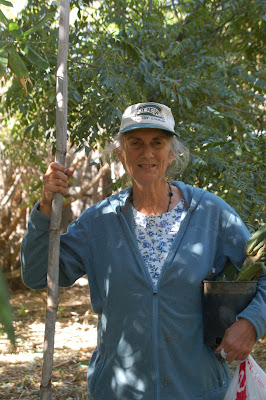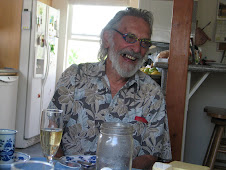
During a recent visit and plant walk at the NSA Farm with Monica Dirac... we passed the lovely new leafs on the
Brachychiton rupestris in the front yard... knowing that it bloomed like crazy, we began to look for seed pods...low and behold...Monica spotted them.... they are a lovely little boat shaped packet with the seeds looking like a nest of birds....I then realized that i hadn't posted the pictures that I shot of it flowering like crazy a few months ago! so here they are! Enjoy!
Here is a bit of what Wikipedia has to offer about it;
The Queensland Bottle Tree (Brachychiton rupestris) originally classified in the family Sterculiaceae, which is now within Malvaceae, is native of Queensland, Australia. Its grossly swollen trunk gives it a remarkable appearance and gives rise to the name. As a succulent, drought-deciduous tree, it is tolerant of a range of various soils, and temperatures.
It can grow to 18-20 meters (40 feet) in height and its trunk has the unique shape of a bottle. Its swollen trunk is primarily used for water storage. On every tree the leaves are variable from narrow and elliptic to deeply divided. Clusters of yellowy bell shaped flowers are hidden within the foliage, and are followed by woody boat-shaped fruits.
Bottle Trees are commonly found planted in streets, parks, on farms and as features in gardens. Roma, Queensland is one country town with prominent bottle trees. They also grace the new entrance to the Geelong Botanic Gardens (38° South Latitude). http://en.wikipedia.org/wiki/Brachychiton_rupestris



























